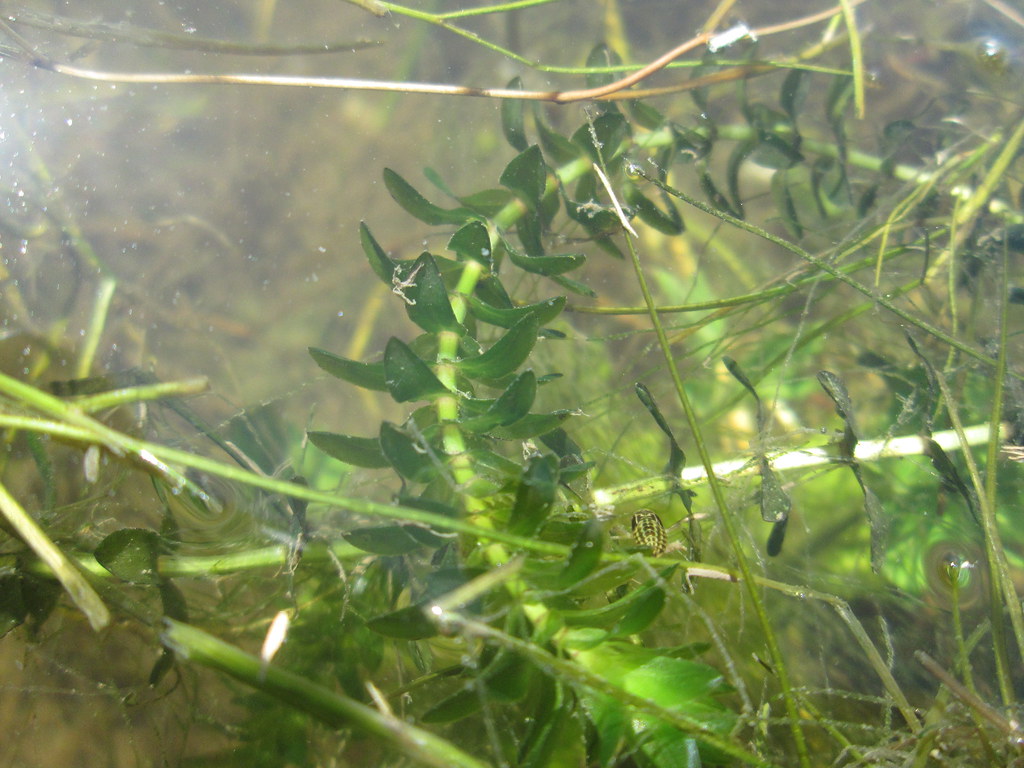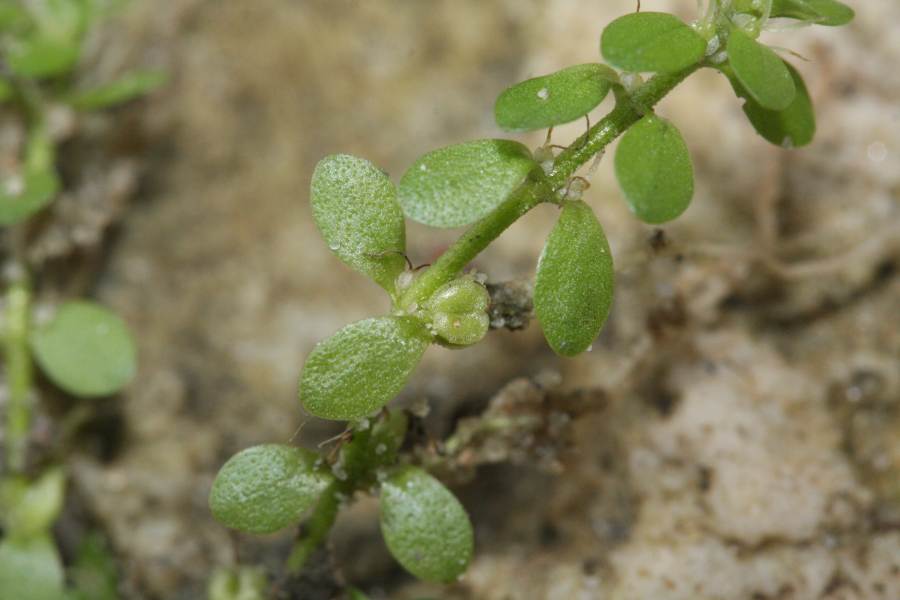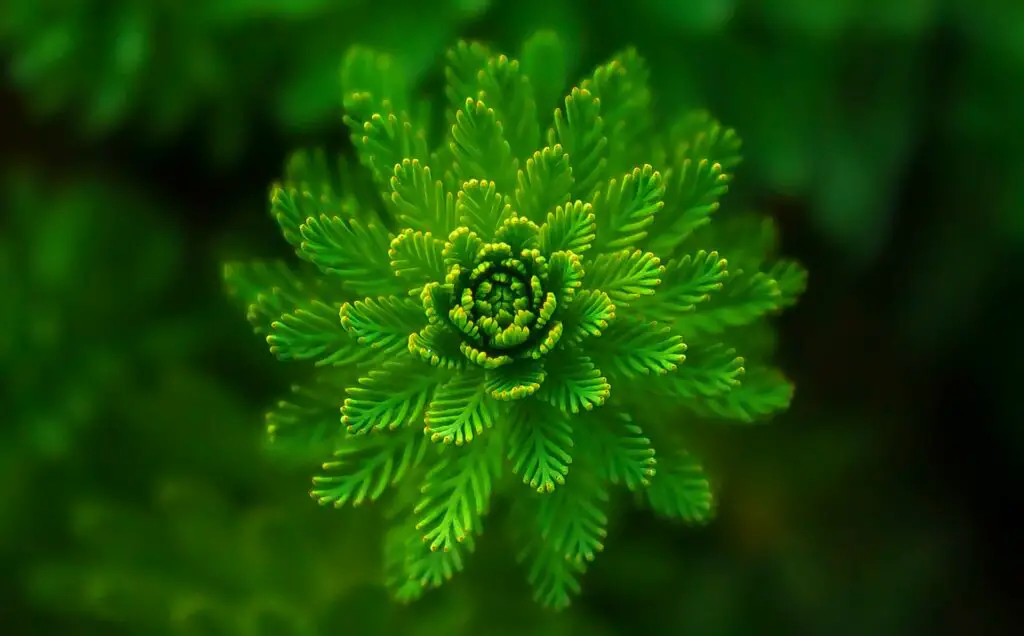The 5 best oxygenating water plants for your pond are: hornwort, waterweed, anacharis, parrot’s feather, water starwort.
In this article, I am excited to share with you some of the best oxygenating water plants and why it is so good to have them in your pond or aquarium. Oxygenation and filtration are crucial for a pond’s well-being, and plants play a vital role in both processes. They release oxygen through photosynthesis, creating a rich oxygen supply for aquatic organisms.
Their foliage acts as a natural filter, absorbing excess nutrients and impurities, helping to keep the water clear and prevent algae blooms. Let’s discover how to select the perfect oxygenators for your pond, ensuring a thriving and harmonious aquatic environment. The plants aren’t listed from best to worst, as each has their own great capabilities.
If you would like to know how to select and take care of your water plants, and how they produce oxygen, have a look here.
Here ar the 5 best (in my opinion) oxygenating water plants:
Hornwort (Ceratophyllum demersum)

is highly regarded as a top-notch oxygenator in aquatic environments. Its finely textured foliage provides a large surface area for efficient gas exchange, enabling it to release substantial amounts of oxygen into the water. As a result, hornwort helps maintain optimal oxygen levels. Additionally, the dense growth of hornwort creates a shaded environment, reducing the risk of algae blooms and promoting a healthier ecosystem.
Waterweed (Elodea canadensis)

Stands out as another excellent oxygenator in aquatic environments. Similarly to hornwort, the dense, feathry foliage of waterweed provides big surface area for efficient oxygen exchange, ensuring a steady supply of oxygen for fish and other aquatic organisms. Moreover, waterweed’s fast growth rate allows it to rapidly grow and cover a large area, further enhancing its oxygenating capacity.
Anacharis (Egeria densa)

Similar to waterweed, is renowned for its exceptional oxygenating qualities, making it another favored choice among aquatic enthusiasts. This submerged aquatic plant possesses a dense, flat foliage that allows for efficient oxygen production through photosynthesis. SImilarly to waterweed, anacharis has a rapid growth rate, enabling it to absorb significant amounts of carbon dioxide and release oxygen at an impressive rate. Additionally, anacharis exhibits resilience in a variety of water conditions, including low light and fluctuating temperatures. Its ability to thrive in diverse environments as well as its prolific oxygenating capabilities make anacharis a valuable addition to ponds and aquariums, promoting a healthy aquatic ecosystem and enhancing the overall well-being of fish and other aquatic organisms.
Parrot’s Feather (Myriophyllum aquaticum)
It has finely divided, feather-like foliage – you can find it on the featured picture. What sets parrot’s feather apart is its remarkable ability to grow both submerged and emerged, adapting to various water depths. This versatility makes it a great addition to ponds and water gardens. Additionally, parrot’s feather possesses a striking appearance with vibrant green foliage, adding an aesthetic appeal to aquatic landscapes. Personally I find it really pretty! With its oxygenating “power” as well as attractive features, parrot’s feather proves to be an excellent choice for maintaining a healthy and visually appealing aquatic environment.
Water Starwort (Callitriche stagnalis)

Its finely textured leaves and delicate branching make it a standout among other water plants. What sets water starwort apart is its unique ability to grow both in shallow and deep water, adapting to various water levels. Furthermore, water starwort’s dense growth provides hiding places and shelter for small aquatic creatures, making it undoubtly a beneficial addition to ponds and aquariums. Water starwort is surely an excellent choice for maintaining a thriving and balanced aquatic environment.
Below you’ll find a table summarising the pros and cons of each plant and their specific contributions to oxygenation, nutrient absorption, habitat provision, and overall water health.
| Plant | Pros | Cons |
| Hornwort | – Excellent oxygenator, releasing oxygen during daylight hours. – Provides shelter and hiding places for small aquatic organisms. – Helps in reducing algae growth by competing for nutrients. – Easy to grow and propagate. | – Can become invasive and overtake other plants if not properly managed. – May shed needles or fragments, requiring occasional maintenance. – May attract certain pests like snails. |
| Waterweed | – Rapid growth and high oxygenating capacity. – Absorbs excess nutrients, helping to prevent algae blooms. – Provides cover and food for fish and other aquatic organisms. – Easy to cultivate and propagate. | – Can become invasive and require regular trimming to prevent overgrowth. – May require some control measures to prevent spreading to natural water bodies. – Prone to breakage or uprooting in strong water currents. |
| Anacharis | – Strong oxygenator, aiding in maintaining oxygen levels in the water. – Fast-growing, providing quick coverage and shade. – Absorbs excess nutrients, reducing the risk of algae growth. – Suitable for both aquariums and outdoor ponds. | – Can become invasive and may require management to prevent spreading. – May shed leaves or fragments, requiring occasional cleanup. – Prone to breakage or uprooting in strong water currents. |
| Parrot’s Feather | – Excellent oxygenator, enhancing water oxygen levels. – Dense growth provides hiding places and shelter for aquatic creatures. – Adds aesthetic appeal with its delicate and feathery foliage. – Can tolerate a wide range of water conditions. | – Can become invasive and overtake other plants if not properly managed. – May require regular pruning to maintain desired size and prevent overgrowth. – Can be sensitive to cold temperatures and may require winter protection in some regions. |
| Water Starwort | – Effective oxygenator, promoting a well-oxygenated environment. – Adaptable to various water levels, suitable for different aquatic habitats. – Provides hiding places and shelter for small aquatic organisms. – Adds visual interest with its fine leaves and branching. | – Can be sensitive to warmer temperatures and may decline during hot summer months. – May require regular maintenance to prevent overgrowth or invasive tendencies. – Prone to breakage or uprooting in strong water currents. |
Selecting the right oxygenating water plants for your pond can be tricky, especially considering the specific needs of your pond and the potential challenges associated with each plant. But don’t stress it! You can always switch and change if you are not happy with the results. The 5 plants discussed in this article – Hornwort, Waterweed, Anacharis, Parrot’s Feather, and Water Starwort – each offer unique advantages in terms of oxygenation, nutrient absorption, and habitat provision. By choosing the most suitable options and properly maintaining them, you can not only enhance the oxygen levels and reduce algae growth, but also create a thriving environment for your aquatic inhabitants.


